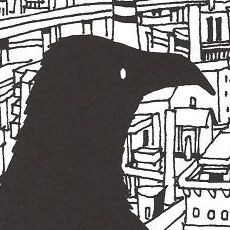Tag: Yoko Kanno
-
Birdland
/
Read More →: BirdlandAlthough I’ve been writing this anime blog for a long time now, over 6 years, in fact, I’m still not sure of the kind of blogger I am. I’m not disciplined enough to write every few days, nor do I enjoy deep analysis of anime. I don’t even really enjoy discussing it to any great…
-
On Wolf's Rain
Read More →: On Wolf's RainI first watched Wolf’s Rain in 2003, just as I was beginning to ramp up my interest in anime. I remember a few things about it: being absolutely traumatised by its ending and being spell-bound by Yoko Kanno’s music. Following on from the similarly fondly remembered RahXephon, it made a fan of Studio Bones out…
-
Gren's eternal smile
Read More →: Gren's eternal smileIf I had to condense my love for anime into one single moment, I’d choose the scene when `Space Lion` begins playing in the 13th episode of Cowboy Bebop (Jupiter Jazz.) It is one of the first times I can remember feeling a pang of bitter-sweetness whilst watching anime: the sadness of Gren’s passing tempered…
-
Attention Yoko Kanno & Steve Conte enthusiasts!
/
Read More →: Attention Yoko Kanno & Steve Conte enthusiasts!A Gabriela Robin Site have posted an awesome acoustic live set by regular Yoko Kanno vocalist/collaborator Steve Conte. Performed songs include “Heaven’s Not Enough” (my favorite), “Living Inside the Shell”, “Words We Couldn’t Say”, “Rain” and “Call Me Call Me” – so that’s some of the best music from Wolf’s Rain, Stand Alone Complex and…
-
Polling Yoko Kanno's best soundtrack?
/
Read More →: Polling Yoko Kanno's best soundtrack?I’m a big fan of Yoko Kanno’s music; be it the atmospheric electronica of Macross Plus (1994) or the acoustic style contributed to Wolf’s Rain (2003), it’s hard to ignore the core emotional beauty of her work; a quality that, not matter which musical style she borrows, ensures that she captures our attention (and often,…
-
From rambling to first impressions of Turn A Gundam
/
/ ReviewsRead More →: From rambling to first impressions of Turn A GundamMoans about anime blogging that somehow lead into my first impressions of Turn A Gundam. Yes, you read that right, please try to contain your excitement!
-
Past, present and future
/
Read More →: Past, present and futureTo quote rubbish rockers Staind, it’s been a while. Of course I haven’t stopped watching anime, I just don’t have much to say. I could write boring episode reviews, but you know, that’s boring! More than anything I seem to rely on inspiration to write and the feeling now is that I’m either burnt out…
-
MP3 Spotlight: Yoko Kanno – Kissing The Christmas Killer
Read More →: MP3 Spotlight: Yoko Kanno – Kissing The Christmas KillerFor what seems like forever, I’ve been a hopeless follower of Yoko Kanno’s music. I adore almost every single one her soundtracks, from the jazzy Cowboy Bebop to the sweeping, epic sound of Vision of Escaflowne. With a lot of anime composers, I tend to blow hot and cold – meaning I can love a…
-
The most influential people in your anime fandom
/
Read More →: The most influential people in your anime fandomThe ever reliable ICv2 recently posted up a list of the “ten most powerful people in the North American anime industry“. The run down makes for interesting (if a little predictable) reading and sitting at the top is Gonzo’s bestest buddy Gen Fukunaga (of FUNimation), who managed to visciously kill off any competition with his…
-
Soundtracks that stand alone
/
Read More →: Soundtracks that stand aloneGreat music and great anime usually go hand in hand, but the sign of a great song is that anyone can enjoy it, irregardless of their love (or lack there of) for anime. I remember thoroughly enjoying the music used in Honey & Clover, but on its own it is a disappointing, minimal experience I…
